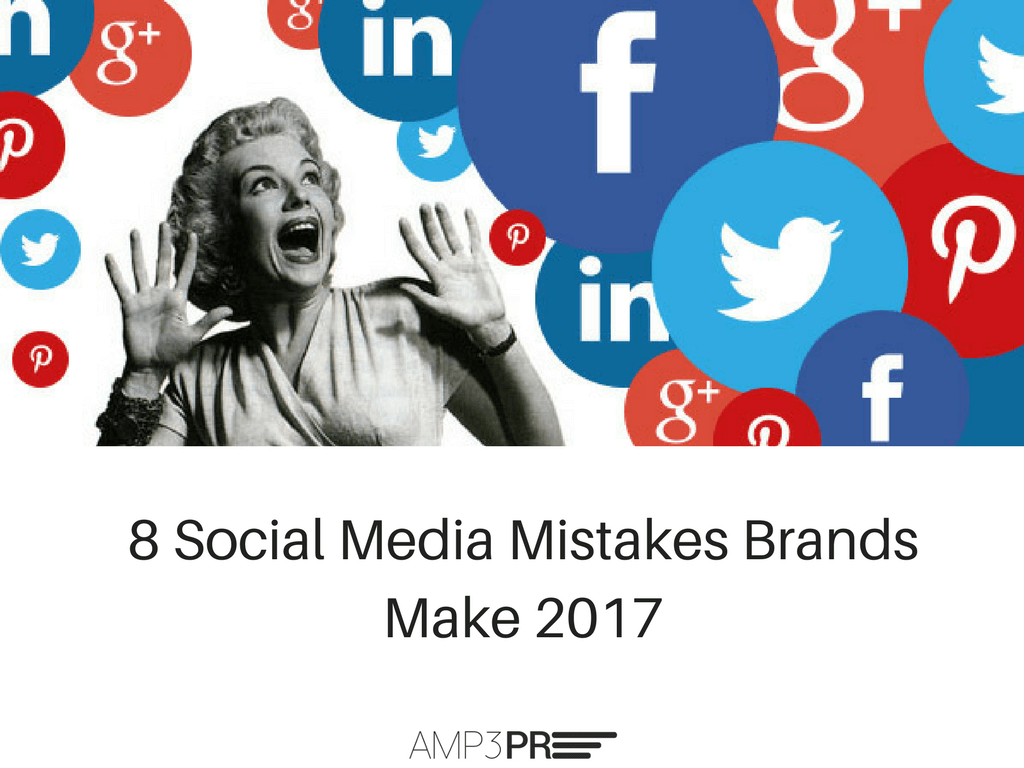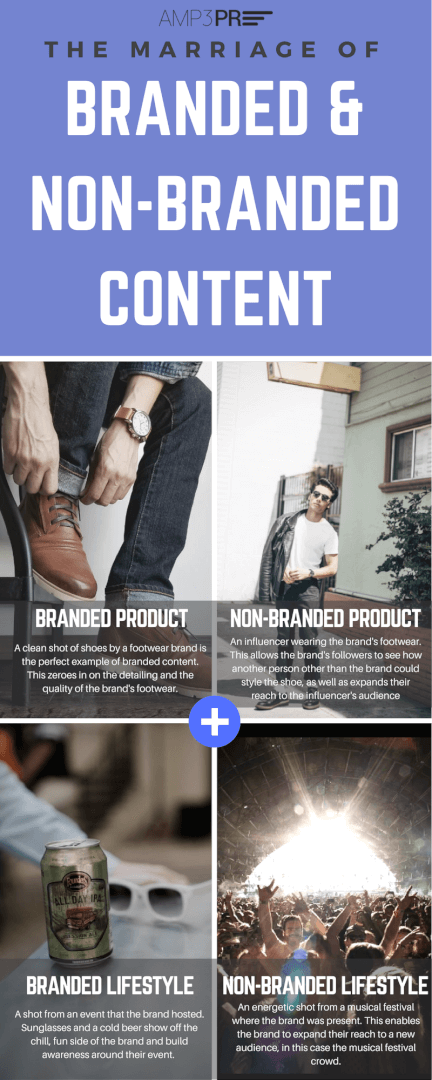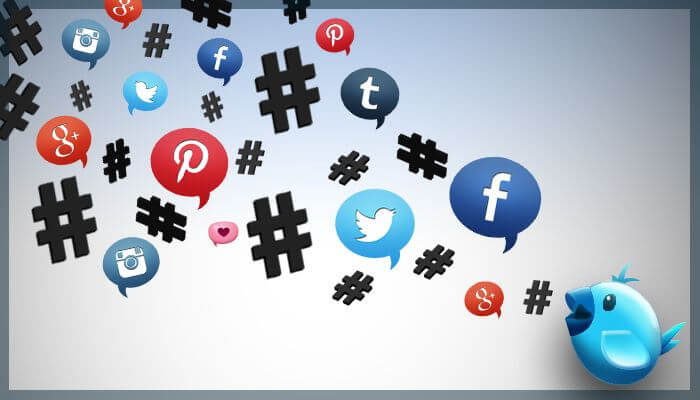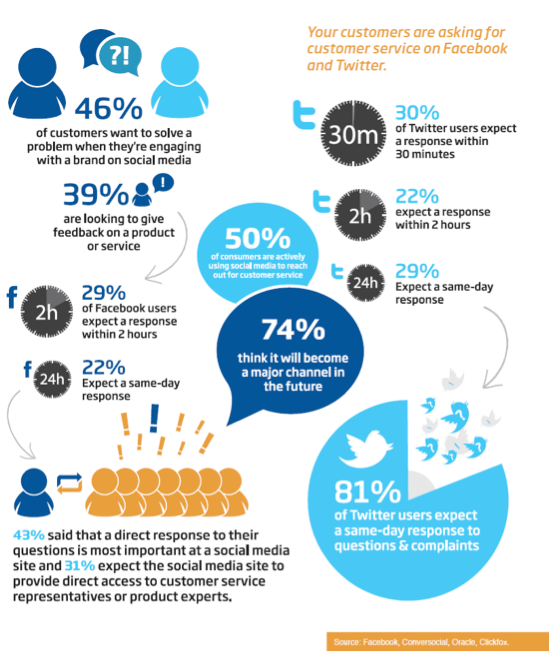Social media has changed the way people communicate and has broadened personal connections. This shift in communication has created a different way for brands to interact with their audience, allowing for direct and personal connections. As a result, social media has become an invaluable tool for brands…as long as they are doing it right!
1. Misunderstanding the Relationship Between Followers and Sales
On social media, everyone wants a high number of followers, but for businesses it doesn’t always translate into direct sales. It does, however, mean increased brand exposure and awareness. Both of which can be more impactful as they help build long term relationships with existing and potential customers.
Followers should be a large motivator for a business. But it can’t be the number one focus. Instead, focus on making your platforms strong. Aim to increase engagement and foster relationships with your audience to increase brand loyalty. If you build it (well), they will come.
2. Sales Sales Sales
Avoid being too salesy, social media is not the place. Audiences don’t want to be sold to all the time and they will quickly unfollow you.
Instagram in particular, users are there for the visual experience. Anything that interrupts that experience (and sales can definitely do that) will result in the loss of interest and connection.
“Audiences don’t want to be sold to all of the time”
Rather than directing all energy (and money) on purely sales-driven language and imagery, we advise that brands focus on quality content. One of the greatest errors a brand can make is not focusing on a solid balance of quality content.
3. A Moving Target
You can have the best content, but if you don’t have a target audience, then you are shooting in the dark. Your content, your voice, should all be purposeful with the intent of appealing to your desired audience.
Because your audience dictates so much of how you post, engage, etc. on social media; deciding who your intended audience is should be one of the very first steps in successful social media marketing.
4. Balancing Branded and Non-Branded Content
Content is an incredibly important part of success on social media but often time brands will only post branded content. Branded content is purely sales-driven through either copy or imagery of products or services.
While this type of content is important to both you and your audience, sooner or later it will become ineffective and your social media channels will plateau or decrease in all measurable metrics.
But here’s where it gets good:
This is where non-branded content comes in. Balancing your social channels with a mix of branded and non-branded content will not only provide your customer with additional information about your brand but will expand on your “personality” as a company.
Let us explain with an example:
If you are a jewelry designer from Austin, TX, your non-branded content can feature photos of delicious local food, skyline shots of downtown Austin, or simply photos that speak to who your customer is.
Something that you must also keep in mind while posting non-branded content is that social media is a legitimizer. It is the reinforcement of the characteristics and personality (the voice) that your brand conveys to the public.
So:
If your brand is based in Austin, and that is something that you express a particular pride in, someone shouldn’t visit your page and see a bunch of posts about LA. Always aim to be consistent. Use lifestyle posts to reinforce your voice, not contradict it.
“Non-branded content can expand reach into other markets”
Posting compelling lifestyle content not only attracts like-minded followers but expands your reach into other markets, and your growing audience has more of a reason to come back to your pages, creating brand interest and loyalty.
Bonus:
UGC (User Generated Content) is a particularly strong asset a brand can utilize when looking for additional non-branded content. This will attract like-minded followers to your Instagram, Facebook, or Twitter page and expand reach into other markets, creating brand interest and loyalty.
So what’s the bottom line? You can apply User Generated Content in your campaign to build stronger relationships with your current costumers with the end goal of increasing conversions.
Ultimately, it is the balance between both branded and non-branded content that will give your brand the most success.
5. The Hashtag Epidemic
Another quick and easy way to expand your reach is through hashtags. Because you only have so many characters on Twitter, you have to strategic about the hashtags that you choose to use.
In order to decide which hashtags are the best fit for you post, do your research. See what is trending. Ask yourself:
- Who am I trying to reach?
- What are people talking about?
On Instagram, you don’t have a character count, so you can be much more generous with your hashtags.
But here’s the kicker:
Instagram is a visual platform. And unfortunately a bunch of hashtags in your caption isn’t very easy on the eyes. Instead use the tactic of a First Comment.
This can be done manually, or through a third party scheduling platform like OnlyPult. With first comment you are still utilizing the reach of the hashtags, but they are out of sight.
This avoids the risk of your caption being tacky.
Pro Tip:
To manually put in a first comment, go to the notes section of your phone. Add 5 or so dots, returning after each dot so that they stack on top of one another. Then below the bottom dot, type in your hashtags. Like so:
Copy the entire note, go to your published post, and comment with the pasted hashtags. With this technique, it will show that there is a comment, but because the message is so long, it will simply shorten the entire comment to […]. This is perfect because it doesn’t draw attention and distract the eyes away from the photo or the caption.
For more on hashtags check out this ultimate guide from Entrepreneur.
6. Brand Engagement is KEY
Quality content is essential to attracting followers but it cannot stand alone without engagement from the brand.
“Content is King, but engagement is Queen”
Audiences will engage with content in a variety of ways including comments, shares, tags, and likes. Each engagement is an opportunity for a company to grow their exposure, reach, presence, and brand loyalty. They say that content is king, BUT engagement is queen.
“Social media is the new customer service”
Now more than ever social media is the new customer service. For many companies, their social platforms are the first line of defense. Addressing any issues, feedback, or inquiries (positive or negative) with one-on-one responses will make audiences feel connected and cared for in a more personal way.
These are the type of brands that customers want to do business with.
Failure to respond, especially in a timely manner (we’re talking within 24 hours), will make people feel like your brand doesn’t care. And no one is going to be loyal to a brand that doesn’t seem to care.
Engaging is one of the best and most important ways to grow a business using social media. There are a number of resources brands can use to expand or improve upon their social media customer service capabilities.
Infographic: Socialfresh
But beyond customer service engagements, a brand can also engage in other forms, our personal favorite being real-time engagements. It is so important for brands to stay current, timely, and relevant.
How can you make the most of timely engagement?
- Everyday time should be spent monitoring trends.
- What is going on in the news?
- What are people talking about today? What hashtags are trending?
- Look for any relevant conversations that your brand could jump in on.
- A brand that is up to date and in the know about the happenings of their industry are appealing to consumers. Not to mention, trending equals traffic. And you want traffic.
- Also, through third party platforms like SproutSocial, you can pick keywords to monitor.
- These are strategic keywords: your product, your competitor, your campaign slogan, etc.
“Social media might be digital, but it is still SOCIAL media. So acting like a human being is a must. Be social!”
Having a grasp on where and how these words are being used will give you a competitive edge and will open doors for high-level interactions with your audience and beyond.
7. Giving Credit Where Credit is Due
Curating your own content can be difficult and very time consuming. One great resource is the idea of re-sharing other’s content. By using another person’s content, you are getting instant quality content. BUT you must be sure to always give credit. So many companies have been sued due to copyright infringement. Be weary of those that require permission for their content to be used.
As long as you are careful, seek permission or the appropriate rights, and you do give credit (even if it’s not required), there is no reason that sharing other’s content can’t be advantageous for you. And by tagging/crediting the owner, you are not only getting great content, but you are also reaching a new audience…their audience.
Additionally, you are creating a mutually beneficial relationship. They too can benefit from the exposure.
Pro Tip: Our good friends over at HeyOrca have created a fantastic guide on how to protect your brand and reputation on Social. We loved their 8 golden rules (to not look like a Social Media Noob) and think they hit the nail right on the head.
8. Cross Platform Auto Posts
Remember when social media scheduling tools were introduced? And then cross-platform triggers that enabled you to push through the scheduled post to all of your platforms? What a game changer!
But unfortunately, this epic convenience can end up hurting brands a lot more than it helps.
Every platform is different, and thus audiences come to each platform expecting a different experiences. So if you are publishing the same content across all of your platforms, there will be a very strong disconnect. People will think that you are either lazy, or that you don’t understand the platform. All in all, cross posting is a big no.
##
Be sure to check out all the videos for all three parts below and stay tuned for our next video in the #Amplified series.
And don’t forget to subscribe and follow us on social media @amp3pr!
https://youtu.be/mN9OiQyi2RI – Part 1
https://youtu.be/-6QaNoolcoE – Part 2
https://youtu.be/_GDRyjipkUQ – Part 3
Resources:
- The 7 Biggest Social Media Mistakes
- 12 Of The Worst Social Media Errors and How To Avoid Them
- Top 10 Social Media Mistakes
- The 5 biggest social media mistakes to avoid
- The 12 Worst Social Media Mistakes
Looking to amplify your brand? Reach out to us at: info@amp3pr.com or 646-827-9594.








